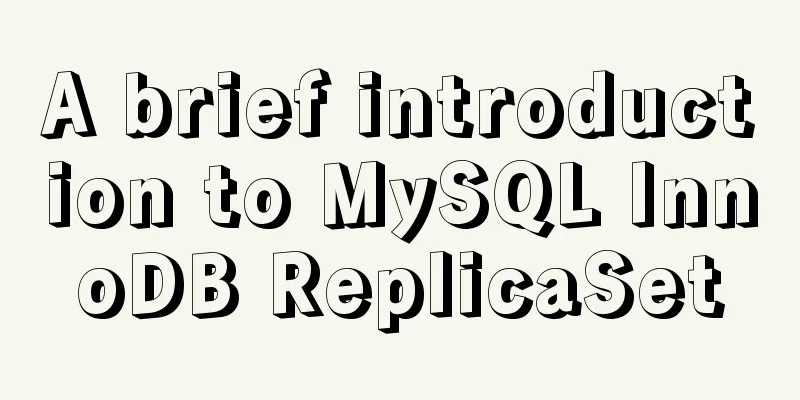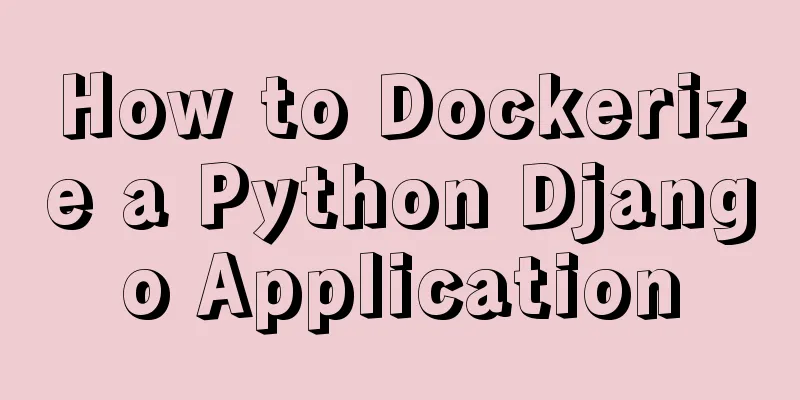The difference between VOLUME and docker -v in Dockerfile

|
There are obvious differences between volume mounting in Dockerfile and mounting with the docker -v command: 1. VOLUMEThe volume mounted on the host machine in Dockerfile using VOLUME is an anonymous volume. On the host machine, it is automatically anonymously mounted to the /var/lib/docker/volumes/ directory. The code is as follows: FROM frolvlad/alpine-java:jre8-slim MAINTAINER oas.cloud COPY nickdir . VOLUME /usr/local/oas/file/ WORKDIR /usr/local/oas/ The VOLUME /usr/local/oas/file/ above defines the path of the directory in the container. The directory will be created in the container during the container creation process, and the mount directory name on the host is randomly generated. For example:
Here on the host machine
The directory corresponds to the /usr/local/oas/file/ directory in the container 2. docker -vdocker -v can specify the specific directory mounted to the host machine, which is more controllable than the VOLUME mounting method of Dockerfile. The code is as follows: $ docker run --name tengine-web -d -p 9527:80 -p 9000:9000 \ -v /usr/local/tengine/logs:/var/log/nginx \ -v /usr/local/tengine/conf.d:/etc/nginx/conf.d \ -v /usr/local/tengine/conf/nginx.conf:/etc/nginx/nginx.conf \ -v /usr/local/tengine/html:/usr/share/nginx/html \ -v /usr/local/oas/file:/usr/local/oas/file nginx The above command can mount the host's /usr/local/tengine/logs and other directories to the container's /var/log/nginx and other corresponding directories. The path before the colon is the host directory (absolute path), and the path after the colon is the path mounted in the image (absolute path). Supplement: The difference between Docker data volume mounting commands volume (-v) and mount 1. IntroductionUsers can create containers with data volumes by using the --volume/-v or --mount options of docker run, but there are some subtle differences between these two options, which are summarized here. 2. Command usage The parameter --volume (or -v for short) can only create a bind mount. Example: docker run --name $CONTAINER_NAME -it \ -v $PWD/$CONTAINER_NAME/app:/app:rw \ -v $PWD/$CONTAINER_NAME/data:/data:ro \ avocado-cloud:latest /bin/bash Notes: Command format: [[HOST-DIR:]CONTAINER-DIR[:OPTIONS]]] If HOST-DIR is specified, it must be an absolute path. If the path does not exist, it will be automatically created. In the example, rw means read-write and ro means read-only. The --mount parameter is used to mount volumes by default, but can also be used to create bind mounts and tmpfs. If the type option is not specified, the default is to mount the volume. Volume is a more flexible way to manage data. Volume can be managed through the docker volume command set. Example:
docker run --name $CONTAINER_NAME -it \
--mount type=bind,source=$PWD/$CONTAINER_NAME/app,destination=/app \
--mount source=${CONTAINER_NAME}-data,destination=/data,readonly \
avocado-cloud:latest /bin/bashNotes: Mount volume command format: [type=volume,]source=my-volume,destination=/path/in/container[,...] Create a bind mount command format: type=bind,source=/path/on/host,destination=/path/in/container[,...] If you create a bind mount and specify a source, it must be an absolute path and the path must already exist. In the example, readonly means read-only 3. Summary of Differences1. Comparison between creating a bind mount and mounting a volume
*Notes: Docker cannot simply open the contents of the volume to ordinary users on the host through sudo chown someuser: -R /var/lib/docker/volumes/somevolume. If more permissions are opened, there will be security risks. In this regard, Podman's design is much more ideal. The volume is stored in the $HOME/.local/share/containers/storage/volumes/ path, which provides convenience and ensures security. The container can be run without root privileges, which is one of the advantages of Podman. It really benefits a lot in actual use. 2. Comparison of using --volume and --mount when creating a bind mount
The above is my personal experience. I hope it can give you a reference. I also hope that you will support 123WORDPRESS.COM. If there are any mistakes or incomplete considerations, please feel free to correct me. You may also be interested in:
|
<<: CSS3 realizes particle animation effect when matching kings
Recommend
VMware Workstation Pro 16 License Key with Usage Tutorial
VMware Workstation is a powerful desktop virtual ...
MySQL 8.0 Window Function Introduction and Summary
Preface Before MySQL 8.0, it was quite painful to...
Detailed explanation of creating a data table in MySQL and establishing primary and foreign key relationships
Preface When creating a primary and foreign key f...
MySQL data type optimization principles
MySQL supports many data types, and choosing the ...
Differences between MySQL MyISAM and InnoDB
the difference: 1. InnoDB supports transactions, ...
The combination and difference between ENTRYPOINT and CMD in dockerfile
In the previous article [Detailed explanation of ...
Detailed explanation of how to use Nginx + consul + upsync to achieve dynamic load balancing
Table of contents Prerequisites DNS domain name r...
How to build a standardized vmware image for kubernetes under rancher
When learning kubernetes, we need to practice in ...
mysql batch delete large amounts of data
mysql batch delete large amounts of data Assume t...
25 Examples of News-Style Website Design
bmi Voyager Pitchfork Ulster Grocer Chow True/Sla...
CentOS 7 Forgot Password Solution Process Diagram
need Whether it is a Windows system or a Linux sy...
Example of using CSS3 to create Pikachu animated wallpaper
text OK, next it’s time to show the renderings. O...
How to implement draggable components in Vue
This article shares with you how to implement dra...
JS implements click drop effect
js realizes the special effect of clicking and dr...
A brief analysis of the difference between ref and toRef in Vue3
1. ref is copied, the view will be updated If you...









